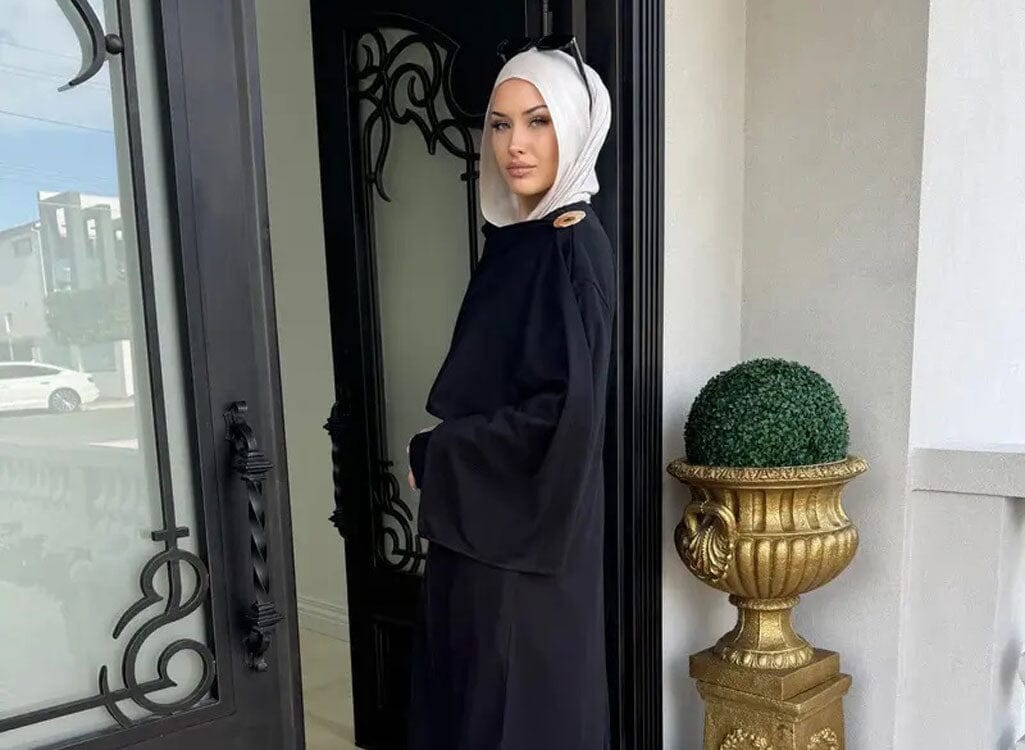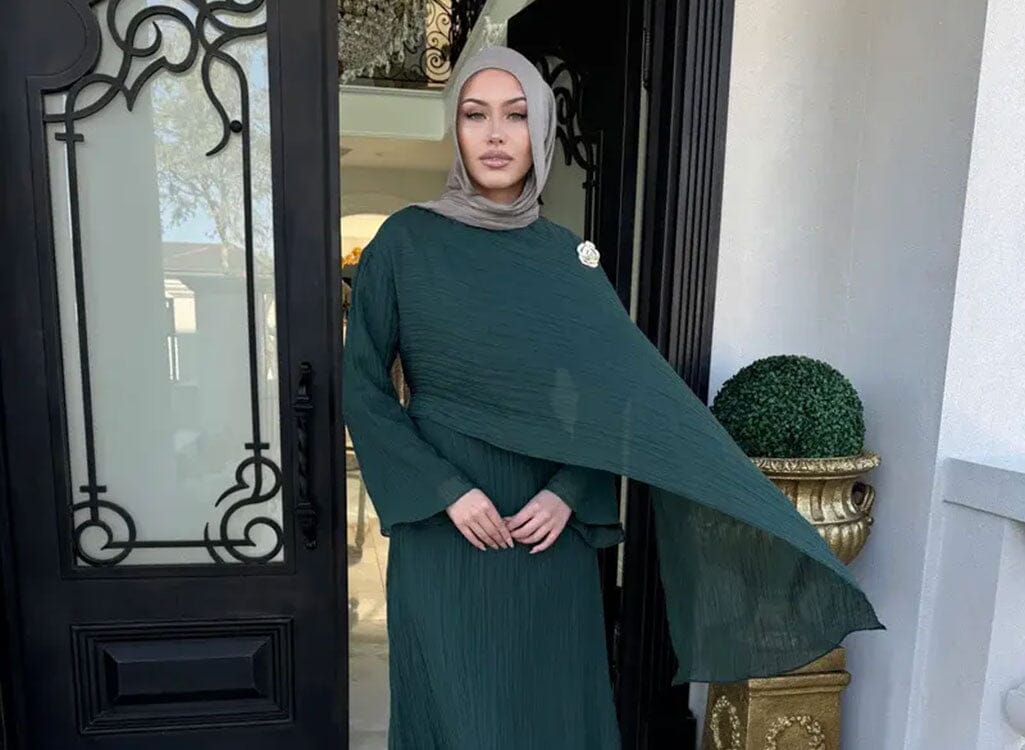
The Appeal of Modest Dress Clothes Series: Asian
Explore the rich tapestry of modest clothing trends in Singapore, Malaysia, and Indonesia, where tradition and modernity blend in elegant and harmonious ways.
Modest clothing has evolved into far more than just a passing trend-it is now a vital aspect of cultural identity, personal values, and global fashion sensibility. Across Southeast Asia, especially in Singapore, Malaysia, and Indonesia, modest fashion stands at the intersection of heritage and modernity. Here, centuries-old customs and religious observances gracefully merge with contemporary style trends, resulting in an aesthetic that honours tradition while embracing innovation.
In these countries, modest wear is celebrated as a means of self-expression and empowerment, reflecting a commitment to both cultural roots and modern individuality. Singapore’s vibrant cosmopolitan landscape, Malaysia’s deep-rooted Islamic traditions, and Indonesia’s artistic heritage all contribute unique influences to regional modest fashion, creating a dynamic interplay between classic silhouettes and cutting-edge designs.
This post delves into the fascinating journey of modest fashion in Singapore, Malaysia, and Indonesia, revealing how local designers, consumers, and communities are redefining modest wear. Through expert craftsmanship, luxurious materials, and thoughtful attention to both style and substance, modest clothing in this region demonstrates how tradition and trend can coexist beautifully, inspiring women to dress with confidence, elegance, and authenticity.
The Cultural Significance of Modest Clothing in Southeast Asia
Modest clothing in Southeast Asia carries significant cultural and historical weight, weaving together narratives of identity, tradition, and evolving style. In regions like Malaysia and Indonesia, modest fashion extends beyond individual preference-it's a proud reflection of deep-rooted cultural norms and longstanding religious practices, particularly within Muslim-majority communities. Styles such as the Baju Kurung, Baju Kebaya, and Batik remain icons of elegance, designed with flowing silhouettes and expert tailoring that celebrate modesty without compromising on luxury or aesthetics. Embroidery, premium fabrics, and artful layering are hallmarks that capture a heritage of craftsmanship while adapting to modern lifestyles.
Why South Asia Is Leading the Modest Fashion Wave
South Asia has become a powerhouse for modest fashion, standing at the forefront of global trends with an inspiring blend of creativity, heritage, and modern luxury. Designers from the region, especially in Malaysia and Indonesia, are acclaimed for their ability to seamlessly weave traditional motifs and modest silhouettes with avant-garde details, luxurious fabrics, and sophisticated colour palettes. This skilful fusion meets the aspirations of contemporary women, creating collections that are revered not only across Southeast Asia but also by an increasingly discerning international clientele.
Leading designers frequently draw inspiration from rich artisanal legacies, such as hand-embroidered songket, delicate batik prints, and exquisite lacework, while introducing innovative tailoring and on-trend accents. The result is clothing that proudly upholds modesty while exuding contemporary style, empowering women to dress with grace, self-assurance, and unmistakable flair.
As demand for versatile, elegant, modest wear surges around the globe, South Asia continues to influence and elevate international fashion conversations. Malaysian and Indonesian brands in particular have emerged as trendsetters, setting new standards with runway collections and everyday essentials that celebrate cultural depth and global perspectives. The enduring success of these designers is built on their remarkable ability to honour tradition while redefining what modest luxury means in the twenty-first century, proving that modest fashion remains not only relevant but also aspirational and forward-thinking for women everywhere.
Traditional Attire: A Journey Through Time
Traditional attire in Southeast Asia is a testament to the region's rich cultural history and enduring celebration of elegance through modesty. In Malaysia, the Baju Kurung and Baju Kebaya stand as time-honoured icons, revered for their sophisticated yet understated silhouettes. These garments are designed to be both graciously loose and exquisitely detailed, adorned with delicate embroideries and artisanal techniques that often reflect regional heritage, from intricate threadwork to vibrant ornamental patterns. The Baju Kurung, with its flowing lines and classic structure, is widely worn for festivities, daily life, and official occasions, embodying both comfort and cultural refinement. Meanwhile, the Baju Kebaya, renowned for its elegant tailoring and intricate lace, embodies the artistry and femininity inherent in the Malaysian identity.
Similarly, Indonesia's sartorial legacy boasts masterpieces like the Kebaya and Batik. The Kebaya, celebrated for its versatile beauty, is crafted in various styles to suit different regions, often paired with Batik sarongs that feature elaborate motifs echoing centuries-old narratives. Batik itself is recognised globally for its unique wax-resist dyeing process and is designated by UNESCO as a Masterpiece of the Oral and Intangible Heritage of Humanity. Indonesian women treasure these garments for both their symbolic and aesthetic value, choosing them for everything from daily routines to grand ceremonies.
These traditional ensembles across Southeast Asia share a commitment to modesty as an expression of dignity and respect, not only aligning with religious practices but also personifying timeless style. Over generations, designers and artisans have preserved their essential characteristics-modest cuts, luxurious natural fibres, and elaborate embellishments—while thoughtfully updating details like colours, fit, and fabric blends to resonate with modern trends. This harmonious evolution ensures that traditional modest attire remains relevant in today's fashion landscape, empowering women to showcase their individuality while honouring their cultural roots. Through every stitch and seam, these garments continue to tell powerful stories of heritage, artistry, and pride, bridging the past and present in the ever-expanding world of modest fashion.
Modern Modest Fashion: Blending Tradition with Trends
Modern modest fashion in Southeast Asia is a beautiful blend of tradition and contemporary trends, capturing both the region's heritage and the spirit of today’s dynamic style scene. Progressive designers are reimagining classic attire through the lens of innovation, creating collections that are both culturally grounded and effortlessly on-trend. Unique fabrics, ranging from luxuriously soft chiffons and jerseys to crisp, sustainable cottons, are selected not only for their comfort and modesty but also for their fashion-forward appeal and versatile drape.
Embracing bold colour palettes, sophisticated layering, and inventive cuts, the new wave of modest wear confidently balances elegance with modern sensibilities. Statement sleeves, structured tunics, and tailored maxi dresses have found their place alongside traditional silhouettes, offering women a vast array of choices that cater to both personal expression and community standards. Local influencers and young designers frequently highlight these elements on social media, accelerating the diffusion of trendsetting looks and fostering dialogue about identity and empowerment.
In urban centres like Kuala Lumpur, Jakarta, and Singapore, the streets and runways come alive with a celebration of style where modesty is never compromised for fashion. Women proudly mix and match impeccably designed hijabs—ranging from ombré shawls to intricately patterned scarves-with contemporary abayas, high-neck luxe body tops, and dress silhouettes that transition seamlessly from casual afternoons to elegant evenings. Details such as delicate embellishments, artisanal beadwork, and artful pleats infuse each piece with a sense of luxury and individuality.
The result is a thriving, aspirational fashion environment where modest clothing is cherished for its refinement, versatility, and bold creativity. This inclusive approach ensures that stylish women of all backgrounds can find garments that resonate with their personalities, empowering them to dress with both modern flair and timeless confidence, while always reflecting the rich cultural tapestry of Southeast Asia.
Influence of Religion on Modest Fashion Choices
Religion plays a pivotal role in shaping modest fashion choices in Southeast Asia, profoundly influencing both design philosophies and everyday style preferences across the region. In predominantly Muslim countries like Malaysia and Indonesia, Islamic teachings provide a clear and compelling framework for sartorial decisions, calling for elegance balanced with modesty and decorum. This religious foundation is beautifully expressed in the widespread adoption of hijabs, abayas, and other modest garments that respect spiritual guidelines while remaining supremely stylish. Garments often feature thoughtful details such as full sleeves, relaxed fits, and high necklines-design elements that speak to both faith and fashion.
Sustainable and Ethical Modest Fashion in the Region
Sustainability and ethical fashion are gaining traction in Southeast Asia's modest fashion industry, quickly becoming a defining hallmark for both established brands and emerging designers. Consumers are increasingly aware of the environmental and social impacts of their clothing choices, leading to a rise in demand for sustainable and ethically produced modest wear. This heightened consciousness is driving a remarkable shift—people are seeking out garments produced with respect for both people and the planet, choosing quality over quantity and valuing transparency in every part of the fashion journey.
Local designers and brands are responding proactively, embracing a holistic approach that spans eco-friendly materials, ethical production practices, and transparent supply chains. Many are prioritising organic and recycled fabrics, natural dyes, and responsible sourcing, eschewing harmful chemicals and minimising waste at every stage. This movement goes beyond textiles—ethical practices include ensuring fair labour conditions, empowering local artisans, and investing in community-centred manufacturing processes.
Brands are also championing longevity, designing timeless, adaptable pieces that transcend fleeting trends and encourage year-round, multi-occasion wear. Packaging is being reimagined with biodegradable or reusable materials, and sustainability messaging is woven proudly into brand storytelling—from lookbooks to product tags. Moreover, collaborations with NGOs, educational outreach, and active participation in environmental initiatives underscore a deep commitment to positive change.
As a result, the modest fashion scene in Singapore, Malaysia, and Indonesia is distinguished not only by its style, elegance, and cultural integrity but also by a forward-thinking dedication to a better, more responsible fashion future. This synergy between ethics and aesthetics ensures that today’s modest fashions are not only beautiful and respectful of tradition, but also conscious choices that align with the values and aspirations of the modern woman.
Timeless Modesty, Modern Vision
The modest clothing trends in Singapore, Malaysia, and Indonesia reflect a harmonious blend of tradition and modernity, where time-honoured values and contemporary fashion sensibilities intertwine to create a truly unique style narrative. Deeply embedded in the region’s cultural and religious tapestry, these trends honour the essence of modesty through thoughtfully tailored silhouettes, luxurious fabrics, and fine artisanal details—elements that simultaneously evoke heritage and speak to a spirit of innovation.
This vibrant interplay is evident in how modest fashion continues to evolve and remain relevant. Designers and brands continually bridge classic elegance with the demands of modern lifestyles. From the iconic Baju Kurung and Kebaya to reimagined hijabs and luxe body tops, collections are crafted with an eye to versatility, comfort, and aspirational aesthetics. Genderless layering, eco-friendly materials, and premium finishes set new standards, empowering women to express personality, confidence, and sophistication while reflecting cultural pride.
An openness to global trends complements the influence of tradition, as urban minimalism, bold hues, contemporary cuts, and sustainable practices have seamlessly integrated into Southeast Asia’s modest fashion DNA. This adaptability ensures that modest wear is accessible for every occasion, age, and taste, appealing to style-conscious consumers worldwide.
As the demand for modest fashion continues to grow, Southeast Asia has emerged as a beacon of creativity and craftsmanship on the international stage. Designers from this region are not only preserving artistic heritage but are also leading the charge toward a more inclusive, sustainable, and style-conscious future. The result is a diverse palette of clothing options, both heritage-inspired and trend-driven, that celebrate the individuality of every woman while affirming that modesty and luxury can coexist beautifully and effortlessly in today’s fashion landscape.




